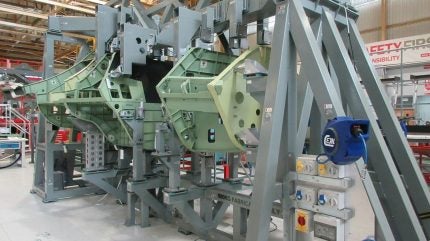
UK’s new combat air demonstrator, a key precursor to the Tempest fighter jet, has entered manufacturing.
The UK has officially embarked on the production of its first crewed combat air demonstrator in four decades. This initiative was spearheaded by industries such as BAE Systems, Rolls-Royce, and MBDA UK in collaboration with the UK Ministry of Defence.
The newly commenced project aims to introduce a piloted supersonic aircraft designed to test and showcase technologies, including stealth capabilities and next-generation avionics. The demonstrator will validate these technologies, paving the way for the Tempest fighter jet, which is scheduled for deployment by 2035.
‘Tempest’ will be highly modular and optionally unmanned. According to GlobalData’s intelligence on the UK defence market, Team Tempest aims to incorporate advanced and upcoming technologies, including AI, directed energy weapons, and swarming technology, to control accompanying drones.
The UK Government’s commitment to this project, announced in July 2022, has seen tangible progress. More than half of the aircraft’s structure, encompassing the fuselage and wings, is already under construction.
The project’s focal point is its emphasis on integrating manufacturing processes. BAE Systems is leveraging additive manufacturing and 3D printing technologies to expedite production and reduce costs. This approach includes using Hot Isostatic Pressing (HIP) to create metal parts with minimal waste.
Additionally, Rolls-Royce is set to provide two EJ200 engines for the demonstrator. These engines will be integral to the aircraft’s test flights and operational assessments and will be delivered within the following year. The demonstrator aircraft is set to fly between 2026 and 2027. The collaborative effort involves more than 100 UK suppliers.
For example, BAE Systems chose Wind River to enhance the RAF’s Tempest programme in 2022. Wind River will provide VxWorks 653 platform and safety certification evidence packages to support the programme’s technology demonstration phase.
Test pilots have already accrued more than 215 hours in simulators, providing data to refine the aircraft’s design before its maiden flight.
Furthermore, MBDA UK is developing digital weapon integration processes in tandem with BAE Systems. This collaboration aims to streamline the integration of weaponry into the demonstrator, potentially reducing future costs and development time.




